This is an article I wrote for a magazine I edited in 2008. It was written subsequent to a visit Sue and I made to New Zealand. My son, Steve, lived there and was running in a well known cross country race on South Island. It was sponsored by Icebreaker who were a new company who had uncovered the true value of natural wool, and shown how it was the perfect material for base layers in all weathers. One of their suppliers had their “station” nearby with thousands of acres running from the lake to the mountain tops and we saw they offered accommodation. With the help of Icebreaker we booked in for a few nights, and Icebreaker paid for one know8ng I would write about the experience. I wrote a few, but one I submitted to Geographic/ failed at the final editorial meeting because my photos were not good enough.
I am thinking about merino again this week as we train to Spain, so here it is again:
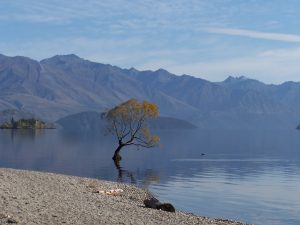
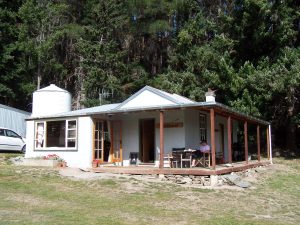
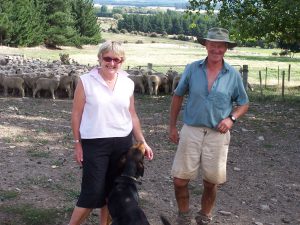
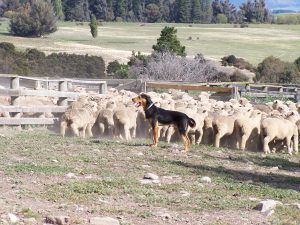
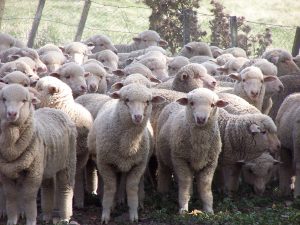
The Merino
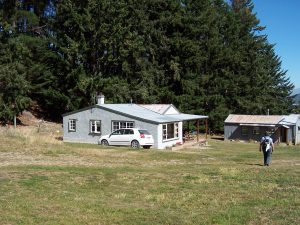
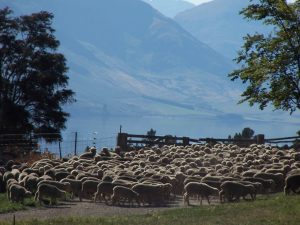
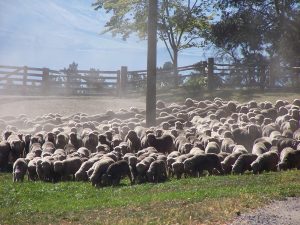
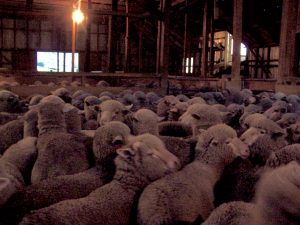
Merino: a Royal Fibre
The Merino sheep produces the finest wool in the world. It is distinctly different from that of regular sheep. It is finer, softer and much more luxurious. Europe’s royalty has recognised this for centuries. The sheep originate in the dry arid areas of Spain and over the centuries a succession of Spanish kings and queens controlled supplies. If you tried to export merino sheep from Spain before the 18th century you would have been executed.
For merino consumers, by that time the wealthy of Europe, settlement of Australia and then New Zealand in the 19th century was timely. War between France and Spain had made supplies difficult at the start of the century and the few animals that had been given to Germany and Holland were providing the main supplies. The climate in both Australia and New Zealand suited the merino. Australia was the first to discover this but even in the 19th century periods of drought and extensive heat made Australian life uncomfortable. As a result a number of the settlers decided to take their sheep to New Zealand. Until refrigeration was introduced in the late 19th century and meat could be exported wool was the major export from New Zealand.
With refrigeration and the growing export of both lamb and mutton came new breeds, along with some crossbreeding, to get sheep with better meat yields and the pure merino retreated to the areas where it did particularly well. Today the Romney is the most common sheep breed in New Zealand but if you go to the “High Country” – the highlands that form the central backbone most of the way down the South Island – it is the merino that is still king. The high coastal Alps to the west capture the rain carried by the winds off the Tasman Sea and these rugged mountainous areas just a few kilometres inland with just 26 inches of rain offer the much drier landscape on which the merino thrive.
From woolly suits to high performance sportswear
It is in these central highlands that the large merino farms – or stations – are located and where the merino and their shepherds have worked together for 150 years to produce wool for the finest suits and jumpers. In the winter the land is cold and covered in snow, while in the summer it is mostly dry and brown. Over two acres is required per sheep.
Lake Hawea Station was part of a huge merino track established in the 1850s and the Rowley family have been there since 1912. When they bought the land it was without a house on it or an established water supply. Today they have a fine homestead and 10500 sheep on 28000 acres that range from a lakeside at about 350m up to about 1600m.
For decades Lake Hawea worked away providing wool for suits and pullovers until some true excitement entered into the market a decade ago with a new sports company called Icebreaker. At a time when the outdoor industry and some sports segments were getting excited about developments with synthetic fibres to manage moisture, temperature and even the bacteria on our skin Jeremy Moon the young founder of Icebreaker had realised that wool offered all these technologies without the need for further treatment. What’s more merino offered all these features and benefits in a fabulous soft, fine form which did not itch the skin in the way regular wool does.
Icebreaker set off on a mission to introduce New Zealand merino to the sports and outdoor world as the natural smart fibre of the 21st century. A renewable resource, a natural resource, and one where the fibre factory is not some dark mill in a pollution ridden industrialised town in northern China belching out smoke and particulates as it breaks down petroleum derivates. Instead the fibre factories used by Icebreaker are carefully chosen hill stations right in the heartland of where their customers go to trek, run, mountain bike, ski and climb amidst some of the world’s finest scenery. Hill stations Like Lake Hawea are the core of this philosophy.
Silence, clean air, and unbelievable night skies create the background for fine long strands of perfect merino wool. Hot dry summer days with clear blue skies and freezing winters with snow on the mountains. Icebreaker work only with carefully selected hill stations – and you can identify them via the unique “BAA code” to be found on many garment. All are required to adhere to the detailed Zque standards set up by the New Zealand Merino (NZM) company. NZM define this as representing a new fibre category ‘ethical wool’. Zque fibre combines the natural performance merino wool with an accreditation program that ensures environmental, social and economic sustainability, animal welfare (non-mulesed) and traceability back to the source. The producers that sign up to it agree to be regularly audited in all aspects of the business right down to the welfare of the sheep dogs they use.
Huntaway – The New Zealand sheepdog
And the dogs are themselves special. The worldwide collie is still much used as a silent controller and manager of herds, but on the high hill tops a dog which barks is required and a new dog breed was developed from hunting dogs called the “huntaway”. Part of its job is finding the sheep in all the obscure and hidden spots during the mustering period.
Dogs are very much part of the life of the merino farm and the Rowleys also have two Jack Russells Archie and Angus who instantly befriend guests and accompany any that choose to take the walk up to the saddle and perhaps beyond up to the peaks. Jack Russells are good for flushing out rabbits. Apparently many early settlers found New Zealand wildlife rather boring and hankered after animals from home. “Acclimatization societies” were set up to release species into the wild in New Zealand and such animals as stoats, Australian possums, and rabbits were introduced. Without exception every introduction has proved to be a disaster either devastating the landscape or displacing and threatening the survival of indigenous species. For the high country rabbits were the major disaster with quite enormous flocks eating everything in site, laying bare the landscape and leading to loss not just of the food needed by the sheep but also the top soil. All sorts of attempts have been made to eradicate them but the best that can be said today is that they are contained.
Working with merino is a highly skilled business made hard not just by the difficult terrain and extreme climate. Merino sheep make good parents but mothers can become unsettled if disturbed. New Zealand prides itself on producing a highly consistent fine fibre which allows companies like Icebreaker the opportunity to create garment in different weights. Irregular feeding creates potential for weak spots in the fibre so good husbandry is vital. Judging the quality of the wool on shearing with pinpoint precision comes from years of experience and sound training that only experts like Tom Rowley have.
In these parts of New Zealand 24 hours can see all four seasons and so it is not surprising that this is the home of layering. We did not see the Rowleys in the traditional kiwi dress of thermal long johns with shorts on top but working from dawn to dusk at widely varying altitudes means that they have perfected precisely the approach to layering that Icebreaker offers in its garments with a wide variety of merino weights.
Merino classes as a “smart” fibre to the extent that it has a number of features that have been forgotten as we have thought only of wool blankets, carpets and suits and become over-excited by the promotion of synthetic polymer based textiles. When merino gets damp it releases heat – “heat of sorption” – and works well in both hot and cold climates to thermo-regulate the temperature of the body. Moisture evaporates from it and is held in a way that avoids the unpleasant clinging feel of many fibres. It can hold 30% of its own weight of water without feeling too damp. Just as valuable is the fact that it does not “stink” if worn continuously in the way that polyester base layers can a marketing position that the somewhat irreverent marketers at Icebreaker like to focus on.
Board Meeting with a View
Days start early and end late on the station and at times of shearing and other periods when all the sheep have to be collected and processed through the woolshed the work is intense. Tom and Adrienne Rowley manage the station with their sons and every afternoon they try and get together for tea. In good weather this informal “board meeting” takes place in the shade and the garden and it was a privilege to attend and join discussions about issues that seem so removed from the isolated beauty of this lake side location with the mountains as the backdrop. The activities of big brands in the USA, concerns about changes in the Chinese textile trade and global currencies were all “on the agenda”.
Isolated as Lake Hawea may be it is not free from challenges. Christine Fernyhough’s recent book “The Road to Castle Hill” explains the difficulties involved in managing a merino station in the 21st century. As a New Zealand celebrity who bought into merinos as life changing activity she quickly came upon the battles with climate, terrain, prices and government issues. These latter are increasingly causing worry as the government pushes for open access and changed ownership of the hilltops without always considering the needs of the original owners and their livestock.
Yet at the end of the day for farmers or walkers have the knowledge that when high up on the chilly hill tops in their layered fine merino tops they can acknowledge that their merino came from a well husbanded sheep who used the wool for just the same purpose on one of the world’s most beautiful hill tops in New Zealand.
Michael Redwood
Sunday, 27 July 2008